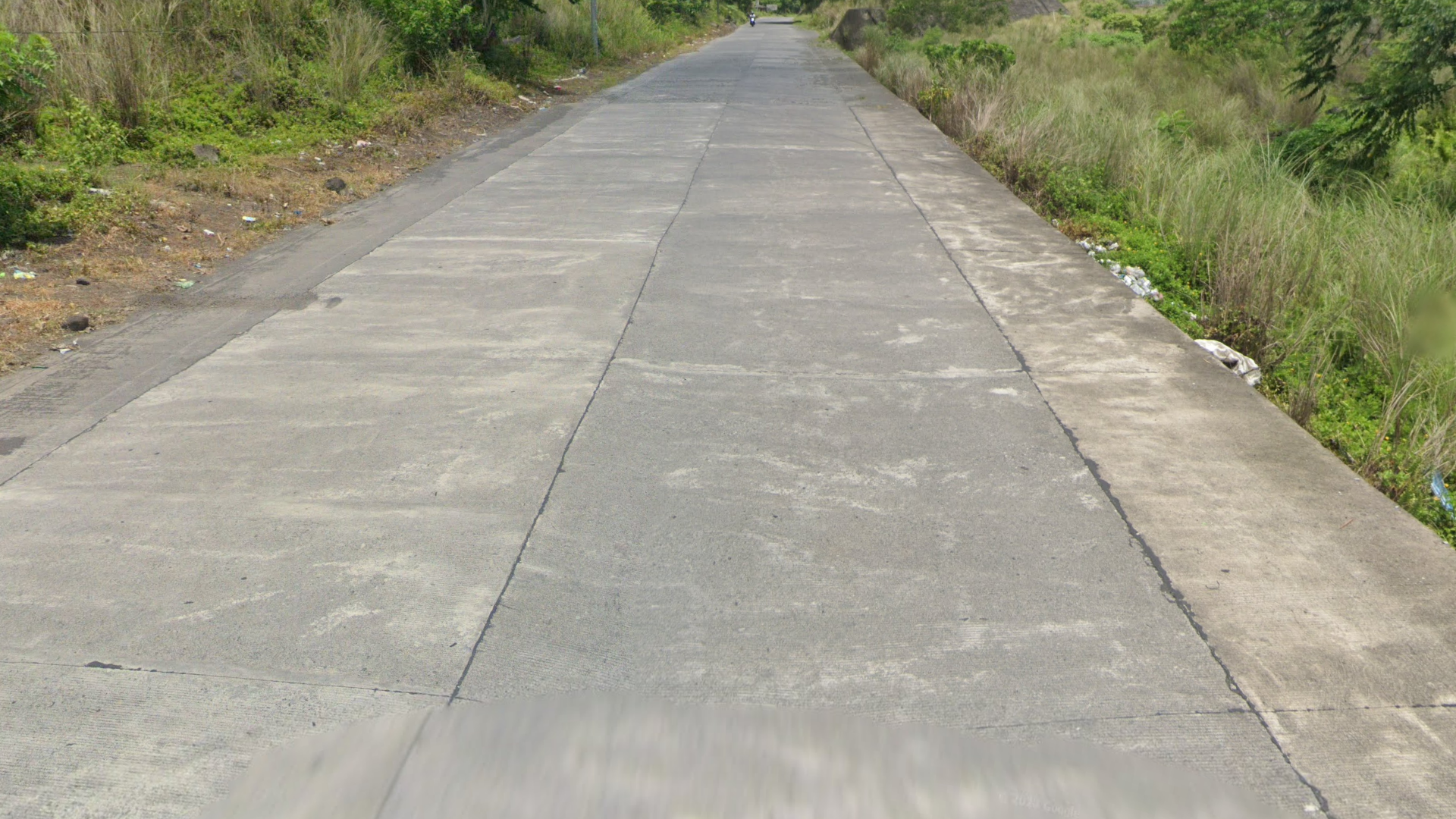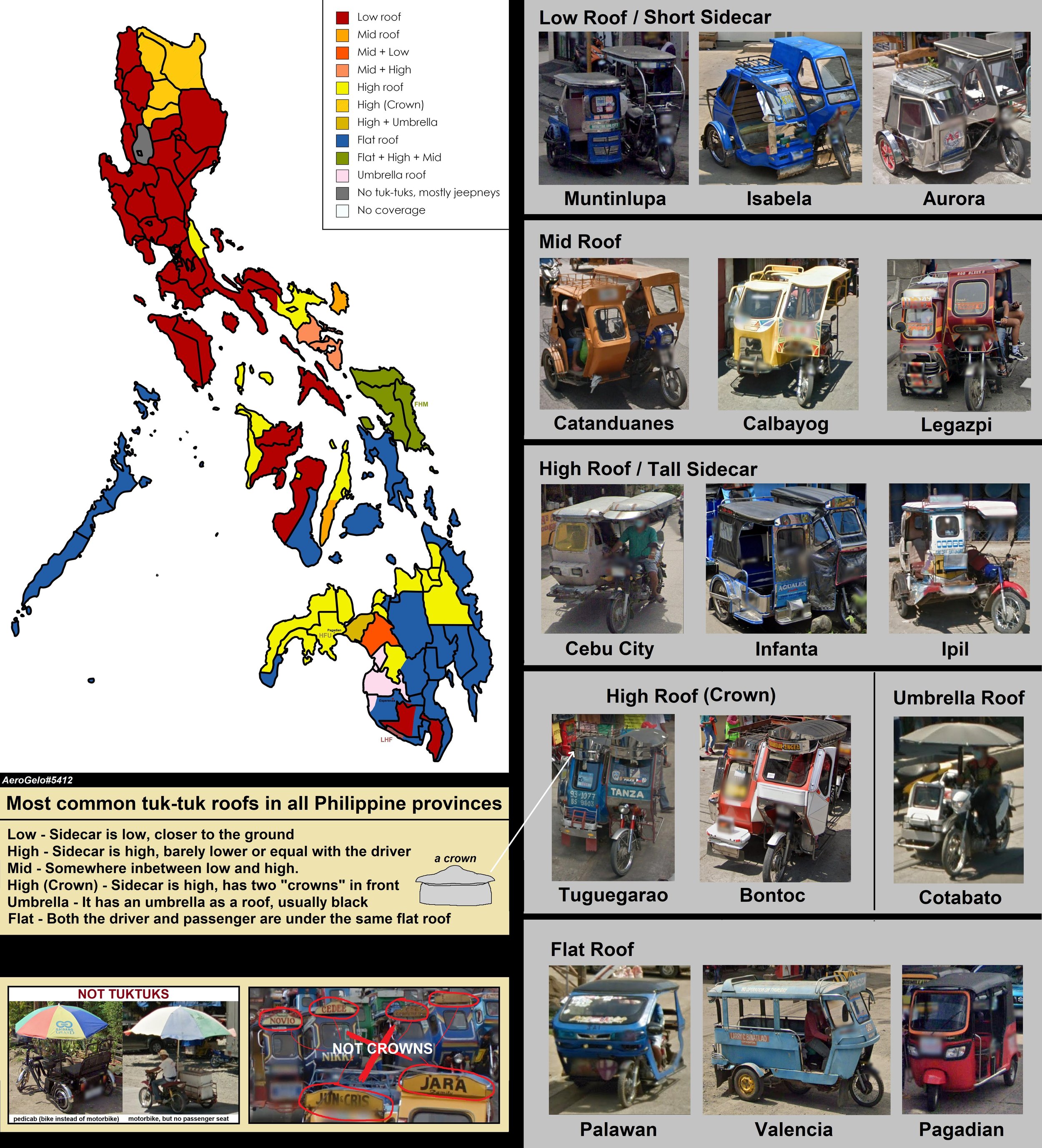
The Philippines
Octagonal metal poles are quite common in the Philippines.
NOTE: They can sometimes be found in Bangladesh and some parts of Malaysia as well.
Middle road lines in the Philippines can be either yellow or white. In particular, you will often see combined yellow and white middle lines, which is not common in any other East Asian country.
Yellow road lines commonly have a distinct orange tint.
In Generation 3 you can come across a white Street View car with the black roof clearly visible.
You may also come across a silvery grey car, which is also found in Bhutan.
These black or white boxes are commonly seen on utility poles. Most of the time they feature a three letter abbreviation of the municipality you are in. The abbreviations will either have all three letters stand for the municipality, or the first two letters will abbreviate the municipality while the third letter indicates the province.
In the first image the "GMI" and "GMU" stands for the town of Gamu in the province of Isabela while the second image the "BGE" stands for the town of Bangued.
NOTE: Most towns do not have any standardised abbreviation so you might find many different abbreviations for the same place.
The forested mountain range in Northern Luzon is characterised by somewhat dry mountainsides and an abundance of pine trees. You may rarely come across a similar landscape on high-altitude roads in Mindanao.
Moluccan albizia are trees with light coloured trunks and pinnate leaves near the top of the tree. They are mainly found on Mindanao and are especially common in the eastern and central regions of the island.
Houses built with amakan walls, a traditionally woven bamboo mat, with a diamond pattern are almost exclusively found in the southern half of the country.
A poletop made up of two tall vertical metal bars having an L-shaped cross-section which are connected via several thin wires, making it resemble a ladder, is unique to Manila and the surrounding area.
NOTE: You may sometimes come across similar looking poletops, with square bars instead of L-shaped ones, throughout the entire country. They will however almost never have more than two connecting wires.
Square metal mesh poles are found on Mindanao, mainly on the Zamboanga peninsula.
NOTE: Most of the poles found outside of the Zamboanga peninsula are found along highways and have poletops with three hanging insulators.
This type of tractor, called a kuliglig, is mostly found on the plains around Cauayan on northern Luzon.
On central Bohol you can find these distinct round grassy hills. The hills generally have dark brown soil beneath the grass, earning them the name of Chocolate Hills.
The Mayon Volcano is one of the tallest mountains in the Philippines and can be recognised by its almost perfect smooth cone shape. Beware that it will very often be covered in clouds.
In and around the city of Marawi, Mindanao you can find many destroyed houses and ruins from the Marawi siege in 2017.
These large decorated white waystones, commemorating the Bataan Death March, can be seen along roads going from Mariveles and Bagac in the south to San Fernando in the north.
NOTE: The Bataan Death March continued from San Fernando to Capas by train, where a larger memorial has been built.
The highway going south from Puerto Princesa on Palawan can be characterised by being very wide, often featuring six lanes, while simultaneously having very little traffic.
Along the road you will usually see this double electrical wire, which can help confirm your guess.
GeoGuessr’s own official maps are not very good, for a variety of reasons. Plonk It recommends the following maps instead:
In addition, here are some resources to help you practise the Philippines:
Plonk It Philippines (map link) - This map contains locations for practising each meta in the Plonk It Philippines guide from step 2 to 3.
















































